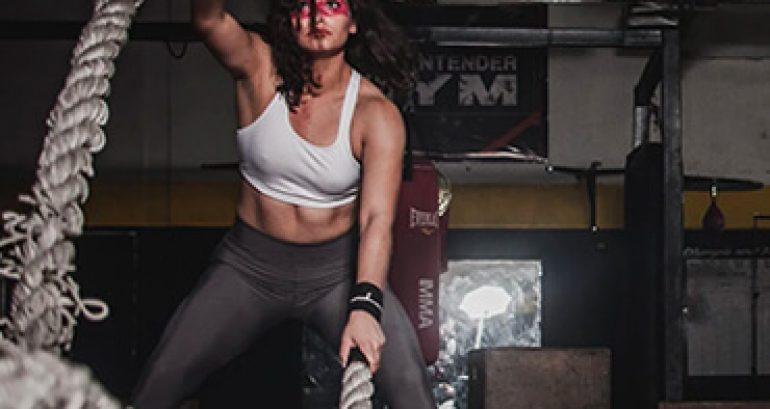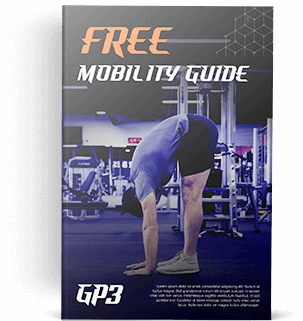Key Points:
1. Nordic Hamstring Curls will help you run faster and avoid knee injury.
2. No other exercise comes close to training the hamstrings as effectively.
3. Fewer than 1% of people can do a single rep, but the right training program can help you achieve one in a matter of months.
Estimated Reading Time: 7-14 minutes
I’m going to help you win the battle against weak hamstrings by waxing poetic about my favorite exercise of the past year.
If you used to play sports at any kind of competitive level, or still do, there’s a bodyweight exercise you need to be doing more often. In fact, you probably don’t do it at all. But don’t let me make you feel badly about that. It’s not your fault; this exercise is really damn difficult.
No prizes for guessing since you hopefully read the article’s title…I’m talking about the Nordic Hamstring Curl.
This exercise is a major key to your longevity as an athlete or a pain-free human, and becoming proficient at it can both prevent injuries and actually help make you faster and more explosive than you were during what you thought was the peak of your playing days. This is especially true if you’ve never been able to perform Nordic curls. In a minute, I’m going to explain how and why this exercise can benefit you so drastically, but first, here’s a brief history lesson.
Where did Nordics come from?
The Nordic Hamstring Curl is not a new exercise. In fact, there are old textbook drawings of people performing this exercise as far back as the late 1800’s. However, up until recently, you never really heard or saw anyone doing them. Nordics have gained a ton of popularity in the last two years, primarily due to the social media exploits of Ben Patrick, aka kneesovertoesguy. He made a great video in early 2021 explaining how Nordics were heavily influential in some of the greatest “speed transformations” of all time. He highlights three cases in particular.
First, we have Jonathan Edwards, winner of a gold medal in the Triple Jump despite his country’s sports medicine staff saying that due his anatomical structure, it was genetically impossible for him to be an elite triple jumper. Next, there was Adam Archuleta, who went from only making the ASU football team as a non-scholarship walk-on in 1996, to becoming the highest-paid safety in the history of the NFL in 2005. And finally, Ben discusses Martin St. Louis, who went from undrafted in the NHL to leading the entire league in scoring, eventually winning the Stanley Cup & League MVP in the same season.
The common denominator with all these athletes? Nordic Hamstring curls were a staple of their training.
So, why is this exercise such a big deal?
In short, they make you faster.
If you’ve been involved in sports at any point in your life, you’ve probably heard the phrase, “speed kills.” It’s true, especially in the context of team sports. If you’re fast enough that you can leave an opposing player in the dust, creating space and breaking down a defense’s system, that’s a massive advantage. It forces the opposing team to modify or even abandon their gameplan simply to deal with the threat you pose. In turn, this creates more time and space for your teammates to be successful.
The power of Nordics lies in their complete nullification of old coaching cliches like, “You can’t coach speed,” or “Your speed is entirely determined by the percentage of your fast-twitch muscle fibers.” Not true. While there is of course a genetic component to speed, this doesn’t mean you can’t dramatically improve your ability to sprint faster.
Nordics work because they improve your hamstrings’ ability to handle tremendous amounts of force while in a lengthened position. I’ll spare you the detailed anatomy lesson, but basically, when your hamstrings can handle high levels of tension in a stretched position, you can apply more force into the ground with each stride, and therefore take longer and more powerful strides.
If you don’t think this is a big deal, look no further than the fastest human to ever live, Usain Bolt. In the 2012 Olympic 100m final, he took only 41 strides. Silver Medalist Yohan Blake took 46, a full FIVE strides more. Apparently the average number of strides for elite sprinters is 44 in a 100 meter race, so clearly, you can see how being able to take 7-10% fewer strides than your competitors to cover the same distance would be an enormous advantage in a race determined by hundredths of a second.
Now, stronger hamstrings aren’t the only piece to the speed puzzle. You need great strength in the muscles of the feet, the calves, the hip flexors, and the glutes, not to mention great running and breathing technique, but hammies of steel are still vital.
Despite their importance, your hamstrings have more than likely always been undertrained.
“But wait!” I hear you saying. “I can out-deadlift everyone in the gym!”
While impressive, this doesn’t matter when it relates to the hamstrings. This is because hamstrings have two primary functions. They act as knee flexors and assist as hip extensors. Deadlifts and RDL’s will train the hip extension portion, but completely neglect the knee flexion piece.
As a quick anecdote, I was still nowhere near being able to perform a single Nordic Curl even when I could deadlift over 500 lbs. This was roughly 2.6x my bodyweight, and it didn’t help one bit. The same was true for a fellow coach I nerded out with about Nordics at a conference in April 2022. When he was a competitive powerlifter, he wasn’t even close to being able to do Nordics despite his best deadlift weighing in at over 3.2x his bodyweight!
At the end of the day, it doesn’t matter if you can deadlift 700 lbs. That exercise is simply too hip-dominant a movement compared to Nordics. Nothing targets the hamstrings as knee flexors like they do. Not RDL’s, not machine hamstring curls, not the Glute-Ham Developer/Glute-Ham Raise (GHD/GHR), not stability ball hamstring curls. Nothing. With Nordics, there’s nowhere for the hamstrings to hide. Yes, you need a strong, stable core, and the calves help a bit, but the hamstrings do nearly all of the work. Most people can instantly feel this. In fact, unless you were or are an elite sprinter, you’re likely to cramp up hard the first time you try Nordics. I’ve known more than a few clients and colleagues who’ve experienced the ol’ “Charley Horse” from a single eccentric (lowering only) half rep.
In the other exercises I listed, there are either too many muscles that can help out the hamstrings, or the angle at which the hamstrings are challenged is too mechanically advantageous to lead to much progress. Think of the GHD as the “knee pushups” equivalent of the Nordic curl. If you can’t perform a full pushup, you could build up to doing 50 knee pushups and still probably not be able to perform a single regular pushup. The same holds true for Nordics. The only way to get better at them is to do them.
Want another benefit? Nothing prevents knee injuries like Nordic curls.
Nordics also go a long way towards preventing knee injuries. The Nordic curl is a long range hamstring exercise, meaning it challenges them in a stretched position. This is ideal, because one of the hamstrings’ jobs is to stop forward knee travel. If something happens during your sport that stretches the hamstrings and puts them under too much tension too quickly, they may not be able to stop forward knee travel. Well, when this happens, the knee still has to go somewhere, right? Often, when the hamstrings should stop a forward-moving knee but don’t, the knee buckles inward and the ACL ruptures. Strengthening the hamstrings in a lengthened position can go a long way towards preventing this.
Additionally, long range exercises like Nordics also strengthen connective tissue itself. This means performing Nordics actually strengthens the hamstring tendons and knee ligaments, such as the ACL. Plus, through building up to being able to perform your first Nordic curls, the mobility and core strength you’ll develop, in addition to insane hamstring strength, will work wonders for your back and knees. So, here you have an exercise that will make you less prone to injuries and help you run faster. What’s not to love?
Plus, doing them gives you serious street cred.
Being able to perform even a single rep makes you a member of an elite club. Men’s Health published an article about legendary MMA fighter Georges-St. Pierre “crushing” Nordic curls during a workout. He did two reps. In 2020, Tyreek Hill, the fastest man in the NFL set the internet ablaze for doing nine reps. Don’t let the video’s title fool you, however. Someone counted wrong and he didn’t actually do ten. I couldn’t believe nobody pointed that out in the comments. But anyway, the point is, if truly elite athletes are blowing people’s minds by being able to perform single-digit reps of a bodyweight-only exercise, you know the exercise is tough.
This is why I think Nordic Curls are so powerful. If you start by performing them the optimal way, with bands and boxes, you’ll be addicted to the progress you make. Because the hamstrings are so undertrained in this lengthened position, you become way stronger, very quickly. I went from this to this in just 12 weeks. Now, I know what you’re thinking…I was capable of doing them all along, it was just the hair that was weighing me down. You might have a point, but a few months later, I built up to being able to do over 10 in a single set. All of this progress was gained from doing Nordics an average of just 3-5 sets, one time per week. It’s been a similar story with clients I’ve coached. You’ll be amazed at the progress you can make in just a couple of months.
Finally, the benefits of increased speed and injury prevention make Nordics perfect for current and “former” athletes.
As you get older, I’m guessing you don’t want to be the person in the alumni game who can’t participate due to their bad back or knees. But, if you’re dealing with pain in those areas, it can be incredibly difficult to find the motivation to work out. When you do find this motivation, it’s common for workouts to leave your joints feeling stiff and achy afterwards. With Nordics, you’ll be preventing that because there’s no impact and no spinal loading. Yes, you’ll be sore as all hell the first few times you do them, but you likely won’t care. Why? They’re a ton of fun. Nearly every single client I work with looks forward to their weekly Nordic session, because it’s just…fun to control your body moving through space in a difficult way. Plus, it’s highly rewarding to see noticeable progress every couple of workouts.
So, give yourself a new challenge! Embrace your competitive instincts and try to become one of the rare few who can perform Nordic curls. I would conservatively guess that less than 0.5% of the world’s population can successfully complete a single rep. Why not you? Plus, you’ll make yourself faster and more resistant to injury in the process.
If you’re wondering where to begin, stay tuned for another post about how to safely get started with Nordics!
Before you go, I’d love to hear from you! Have you tried Nordic Curls before? What was your experience like when you did them?

